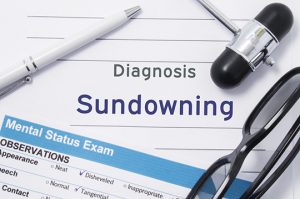Being a nurse is satisfying. Providing excellent care to clients allows you to combine both critical thinking and compassion. But it can also be challenging; juggling priorities, meeting job expectations, and still finding a few minutes to sit with a client can lead to feeling frustrated and overwhelmed.
You’re reading one of our “Nursing Career Guide” articles. Need to practice for your upcoming exam? Take our free NCLEX practice test -- no registration required! ✨
Clinicians of all specialties and every part of the world experience burnout. The National Academy of Medicine found that 35-54% of nurses and physicians experience significant signs of burnout. An article published in JAMA reported that among nurses who left employment in 2018, 31.5% quit because of burnout. Of the nurses who had considered quitting, 43.4% stated that burnout was a factor. The COVID-19 pandemic, and higher client volumes, may cause the percentage to be even higher.
Over time—unless you take care of yourself—you can develop burnout or its evil cousin, compassion fatigue. It’s important to know how to prevent them, starting with the first day of your first job.
Where did the term come from?
In the early 1970s, an American psychologist named Herbert Freudenberger coined the word “burnout” from his observations about the work-related stress in physicians. Freudenberger was concerned, because he noticed that doctors who were overworked stopped being kind idealists who originally went to medical school to help the sick, and then gradually became cynics who treated their patients with detached indifference.
Freudenberger decided to study this behavior. In 1974, he published his findings in his book, Burnout: The High Cost of High Achievement. He found that doctors who experienced burnout all shared three attributes:
- Strong, disciplined work ethic
- High achievers, driven to succeed
- Identity is related to their career
Although he noticed burnout in physicians, later studies showed other professions also share these qualities: nurses, social works, first responders, teachers, and police officers.
What is burnout?
Burnout is a syndrome: a condition characterized by a set of symptoms or behaviors that consistently occur together. It develops in response to chronic job stress. Dr. Christine Maslach, a professor at University of California-Berkley, has studied burnout for forty years. She defines the syndrome with three stages:
- Emotional exhaustion: The first stage of burnout, workers are overextended. They don’t have physical or emotional resources to deal with their exhaustion and can’t find a way to recover.
- Depersonalization: Also called the “cynical stage,” workers become detached from their jobs. They feel negative or callous because of the unrelenting workload. They do just enough of their job to get by, instead of their best effort.
- Reduced personal accomplishment: Finally, workers can’t find any sense of achievement or source of pride in what they do. They feel incompetent and become unproductive. Maslach also calls this stage “inefficacy.”
In addition to these internal responses to feeling overwhelmed and exhausted, external factors can add to the load: lack of equipment or supplies; poor staff retention; and insufficient support from administration.
Simply put, if you’re constantly exhausted, hate your job, and don’t get any satisfaction from what you do, you’re burned out. And it can seriously affect your life.
Symptoms to look out for
Burnout isn’t a specific diagnosis—you won’t find it in the Diagnostic and Statistical Manual of Mental Disorders (DSM)—but there are some definite signs and symptoms to watch for:
Psychological:
- Anxiety
- Frustration
- Anger
- Critical
- Disillusionment
- Fear
- Hopelessness
- Numbness
- Irritability
- Difficulty concentrating
- Inability to feel happy
- Acting unprofessionally
- Lack of empathy
- Feeling ineffectual at work
- Social withdrawal
Physical:
- Exhaustion/Constant Fatigue
- Insomnia
- Headaches
- Muscle tension
- Eating more or less than usual
- GI problems
- Immune system issues
Contributing factors
Although the stress of many types of jobs can eventually lead to burnout, nurses are especially vulnerable for a couple of reasons:
- Lack of self-care: Nurses often prioritize the welfare of others before their own. At work, they may skip lunch or take a heavy assignment to help a co-worker who isn’t feeling well. Clients can have complicated medical needs and/or be critically ill, requiring constant monitoring.
Away from the job, nurses frequently ignore activities that prevent burnout: healthy eating, exercise, adequate sleep, and time with family or friends. They may not schedule vacations, which are proven to boost physical and mental health.
- Organizational environment: Beyond the stress of modern healthcare, an organization can increase the likelihood of burnout with inadequate staffing that encourages nurses to work overtime or take extra shifts. Pressure to volunteer to cover the schedule as a long-term strategy leads to fatigue, frustration…and mistakes.
Another factor that speeds up the burnout process is an organization’s acceptance of bullying and incivility in the workplace. Without a zero-tolerance policy for inappropriate behavior, all staff face unnecessary stress.
How can YOU help prevent getting in the situation yourself?
To prevent burnout, remember the “oxygen mask” rule when you take a flight: You must put on your own oxygen mask before you can help anyone else. The first steps involve making yourself a priority by taking care of your body and mind:
- Diet: As a nurse, you’re already familiar with the food groups and how to add them to your daily meal plans. Food preparation that considers your work schedule ensures you can eat healthy all week. Even on a busy 12-hour shift, you know you have nutritious food to sustain energy.
- Exercise: The Centers for Disease Control and Prevention (CDC) recommends at least 150 minutes a week of moderate-intense physical activity, as well as two or more sessions of strength training that work all the major muscle groups.
- Sleep: Make it a priority. Go for 7-8 hours, no matter what shift you’re on. It can be challenging to get enough sleep, especially if you’re on a string of night shifts. The Sleep Foundation offers information on practicing sleep hygiene and healthy sleep tips.
- Stress: Find out the stress reduction techniques that work the best for you, then put them to use. Deep breathing and listening to music are simple methods. Meditation, progressive muscle relaxation, and guided imagery are popular. There are also some great apps that can reduce stress, help you meditate, or fall asleep.
- Coping: Navigate your workday by learning to handle whatever comes your way. Time management is essential, so tackle that first. Read about, watch YouTube videos, or attend a workshop on conflict resolution and delegation. Small steps can make a big difference with how you react to daily situations.
- Avoid: To prevent burnout, you may need to avoid some “triggers” or change some behaviors. If you feel guilty about not volunteering to pick up an extra shift, it might be time to learn to say “no.” If you’ve been postponing a vacation or just taking a few days off, please submit your request. If you tend to neglect breaks, take a 5-minute walk down the hall to clear your head or head to your locker for a quick protein snack.
Can organizations do anything?
A wise organization or agency knows that “an ounce of prevention is worth a pound of cure.” Ideally, leadership identifies sources of burnout for all staff and implements strategies. Find out if your employer has a Wellness Plan; this is a common benefit that provides a variety of resources to keep staff healthy. Usual offerings include:
- Stress-management classes
- Smoking cessation programs
- Gym memberships (free or reduced-fee)
- Weight loss and nutrition groups
- Healthy food options in the cafeteria
- Employee recognition awards
At the department or unit level, managers should be knowledgeable about their staff, staff skills and scope of practice, and the workloads necessary to provide excellent client care. Managers should:
- Adjust staffing levels for each shift
- Be accessible to all staff
- Pitch in as necessary
- Schedule nurses according to activity
- Have access to a “PRN” nurse pool
What about Compassion Fatigue?
Compassion fatigue is sometimes described as “the negative cost of caring.” It develops in healthcare professionals who provide emotional care to others and start to absorb the emotional pain of the clients. The result is second-hand trauma for the professional, the emotional and psychological effects from listening to the experiences of clients and then trying to help them process their trauma. Depending on which area of healthcare you work, compassion fatigue can be a bigger risk than burnout.
Although it’s similar to burnout—and can lead to burnout if not recognized and addressed—compassion fatigue is caused by ongoing exposure to those who have been traumatized and are suffering from the events. It is less related to work environment factors than burnout. Onset can be rapid, especially if exposed to constant trauma material. Once it’s identified, compassion fatigue can be managed and has a faster recovery rate than burnout.
Some of the signs that are specific to compassion fatigue include:
- Sadness and grief
- Dread of working with some clients
- Reduced empathy for clients and their situations
- Frequent sick days
- Nightmares
- Shifts in beliefs or assumptions
- Decreased intimacy in personal relationships
- Substance abuse
Physical symptoms of compassion fatigue are similar to post-traumatic stress disorder (PTSD) and include muscle tension and cognitive changes.
How much does it cost society?
Burnout, along with compassion fatigue, is expensive. Nurse burnout costs hospitals about $9 billion a year, and $14 billion from the healthcare system. A 2016 poll by the University of Phoenix College of Health Professionals found that 80% of nurses felt they were being asked to take on bigger roles and more responsibility than in 2014. This is partly related to physician burnout, with nurses expected to pick up the slack.
The cost that can’t be tallied is what clients pay when they can’t receive the care they need and deserve. Nurses also pay, both professionally and personally. But by learning to provide self-care with the same dedication and compassion that they want for their clients is the best strategy for every nurse in every part of the world.
You can’t pour from an empty cup. Take care of yourself first.
 By
By 



